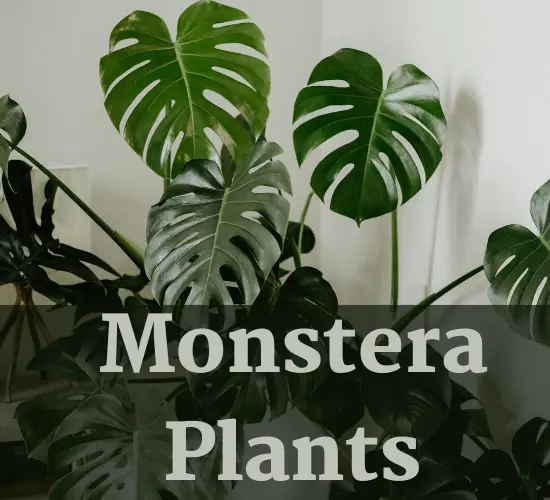Table of Contents
Why My Monstera Leaves Turn Yellow
Monstera plants are a popular choice for indoor gardening enthusiasts due to their unique, tropical appearance and ease of care. However, one common issue that can arise is yellowing leaves, which can be a sign of an underlying problem that needs to be addressed. As a result, it is crucial to understand the causes of yellowing leaves in Monstera plants and how to prevent them from occurring.
This article aims to provide tips for preventing yellowing leaves on Monstera plants, as well as other care tips to ensure your plant thrives. By following these guidelines, you can ensure that your Monstera remains healthy and vibrant for years to come.
Whether you are a seasoned gardener or a novice, understanding how to care for your Monstera plant properly is essential for its longevity and overall health. So, let’s dive into the causes of yellowing leaves in Monstera plants and how to prevent them.
Key Takeaways

- Overwatering and dry soil are common causes of yellowing leaves on Monstera, so it’s important to water only when the top 2-3 inches of soil are dry and ensure proper drainage.
- Low humidity and direct sunlight can also cause foliage burn, so misting the leaves often and placing the plant in low to bright indirect sunlight can help prevent yellowing leaves.
- Monstera can adapt to low-light areas but growth will slow, and it’s important to avoid excessive fertilization and allow the plant to shed old leaves naturally.
Causes of Yellowing Leaves
The yellowing of leaves on Monstera can be caused by a variety of factors, including overwatering, alternating between bone dry and wet soil, low humidity and dry soil, direct sunlight causing foliage burn, and too little light.
Overwatering can lead to root rot and nutrient deficiencies, as well as attract disease-causing microorganisms. Alternating between bone-dry and wet soil can also stress the plant and lead to nutrient deficiencies.
Low humidity and dry soil can cause the leaves to turn yellow and wilt. Monstera plants are native to tropical regions and require high levels of humidity to thrive.
Direct sunlight can cause foliage burn, especially if the plant is exposed to it for prolonged periods. On the other hand, too little light can also cause the leaves to yellow and the plant to become weak and susceptible to disease.
Proper disease prevention and nutrient deficiency management are crucial in maintaining the health of Monstera plants.
Preventing Yellowing Leaves

Proper soil moisture and adequate drainage are crucial factors in maintaining the health of your Monstera plant. Watering frequency should be determined by checking the top 2-3 inches of soil for dryness. The soil should remain damp, but not wet, as overwatering can lead to root rot. To avoid this, discard excess water in the saucer and ensure proper drainage.
Humidity levels are also important in preventing yellowing leaves on your Monstera. Mist the leaves often to increase humidity or use a humidifier in the room where your plant is located. Monstera thrives in low to bright indirect sunlight, so be sure to give it appropriate lighting. Excessive fertilization should be avoided, as it can also lead to yellowing leaves. By following these tips, you can help your Monstera plant to thrive and avoid the common issue of yellowing leaves.
| Watering Frequency | Humidity Levels | Lighting |
|---|---|---|
| Fertilize with a balanced houseplant fertilizer every 2-4 weeks during the growing season | Check the top 2-3 inches of soil for dryness | Thrives in low to bright indirect sunlight |
Other Monstera Care Tips
Maintaining adequate lighting and consistent soil moisture are important factors when caring for a Monstera plant. As a natural process, a Monstera will shed its old leaves. It can grow up to 10 feet tall indoors, and its growth can be slowed down if it is kept in areas with low light. Proper and consistent soil moisture is important, as alternating between bone-dry and wet soil can cause yellowing leaves.
To evoke an emotional response in the audience, it is worth noting that propagating Monstera plants can be a rewarding experience. There are various propagation methods, such as stem cuttings, air layering, and division, which allow plant owners to create new plants and expand their collections.
However, it is important to note that Monstera plants can be prone to common pests, such as spider mites and scales. Taking preventive measures, such as regularly cleaning the leaves and avoiding over-fertilization, can help ensure the health of the plant.
Frequently Asked Questions
What are some common pests that can affect Monstera plants and how can they be treated?
Common pests that can affect Monstera plants include spider mites, mealybugs, and scale insects. Prevention methods include inspecting plants regularly, using organic pest control methods, and isolating infected plants to prevent the spread of pests.
Can Monstera plants be propagated and if so, what is the best method?
Propagating Monstera plants can be done through stem cuttings. Cut a section of stem with a node and aerial roots, and place it in water or soil. To treat common pests, use insecticidal soap or neem oil.
How often should Monstera plants be fertilized and what type of fertilizer is best?
Monstera plants should be fertilized every 2-4 weeks during the growing season with a balanced, water-soluble fertilizer. Organic fertilizers can provide necessary nutrients, but synthetic fertilizers may promote faster growth. The frequency and type of fertilizer used should be adjusted to meet the plant’s nutrient needs and growth rate.
What are some signs that a Monstera plant is getting too much or too little water?
The signs of over-watering effects on a Monstera plant include yellowing leaves and a soil moisture check is important to avoid it. Low humidity, direct sunlight, and excessive fertilization are some causes while watering only when soil is dry and misting leaves often are some remedies.
Are there any specific temperature or humidity requirements for Monstera plants to thrive?
Monstera thrives in temperatures between 65-85°F and prefers high humidity levels of 60-70%. Ideal growing conditions include bright, indirect sunlight, and consistent soil moisture. Proper ventilation can prevent fungal diseases.
Conclusion
In conclusion, yellowing leaves on Monstera plants can be a common issue caused by various factors such as overwatering, low humidity, and improper sunlight exposure. To prevent this, it is important to maintain the appropriate watering schedule, humidity levels, and light requirements for your Monstera.
Additionally, regularly inspecting your plant for pests and diseases can also help in maintaining its health.
By following these care tips, you can keep your Monstera thriving and vibrant for years to come. Remember, a healthy Monstera not only adds to the aesthetic appeal of your home but also contributes to a healthier living environment.
Coincidentally, the sight of a lush and vibrant Monstera in your living space can also bring a sense of calm and serenity, making it the perfect addition to any home.
3 thoughts on “Understanding the Mystery: Why My Monstera Leaves Turn Yellow?”